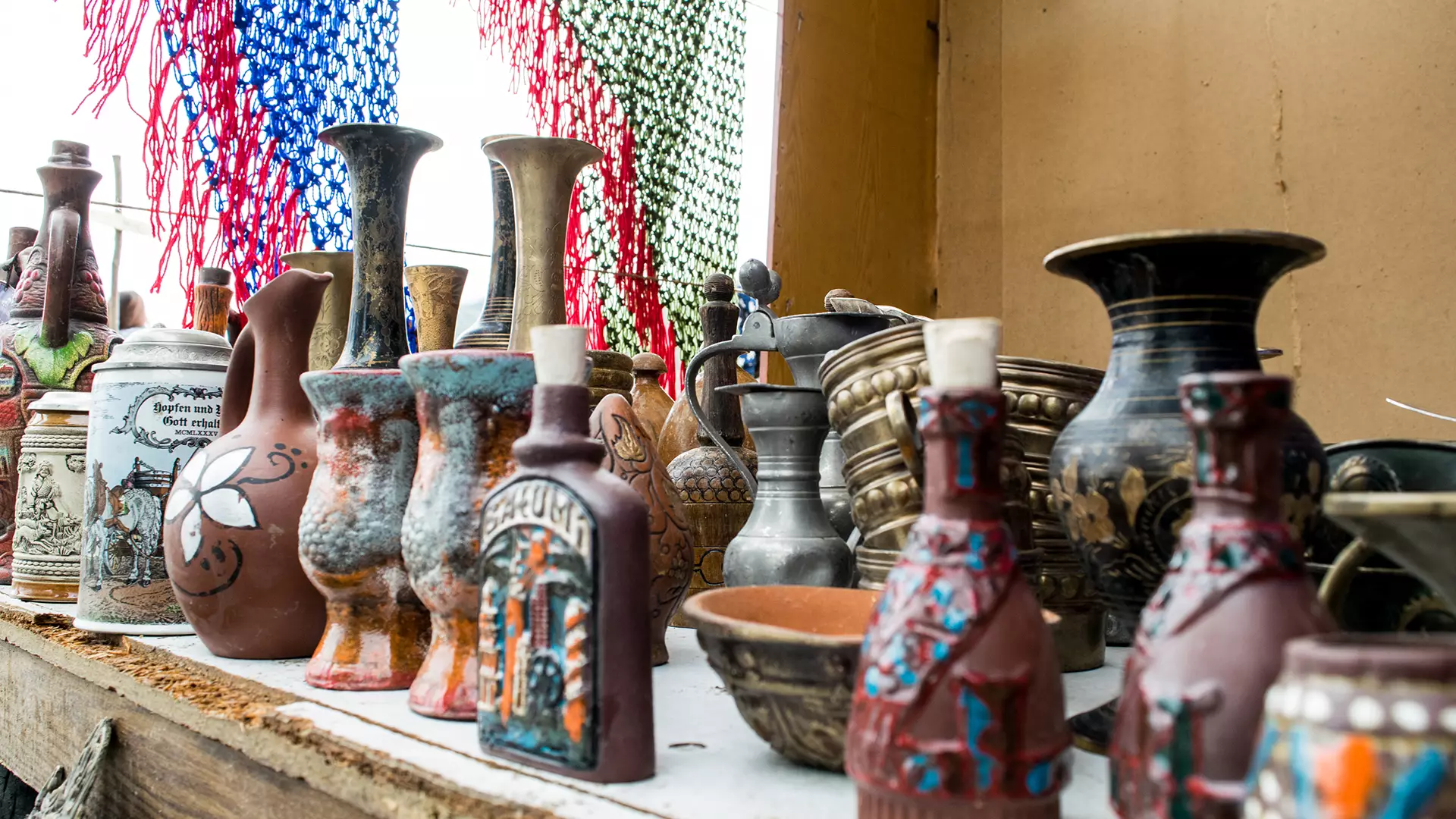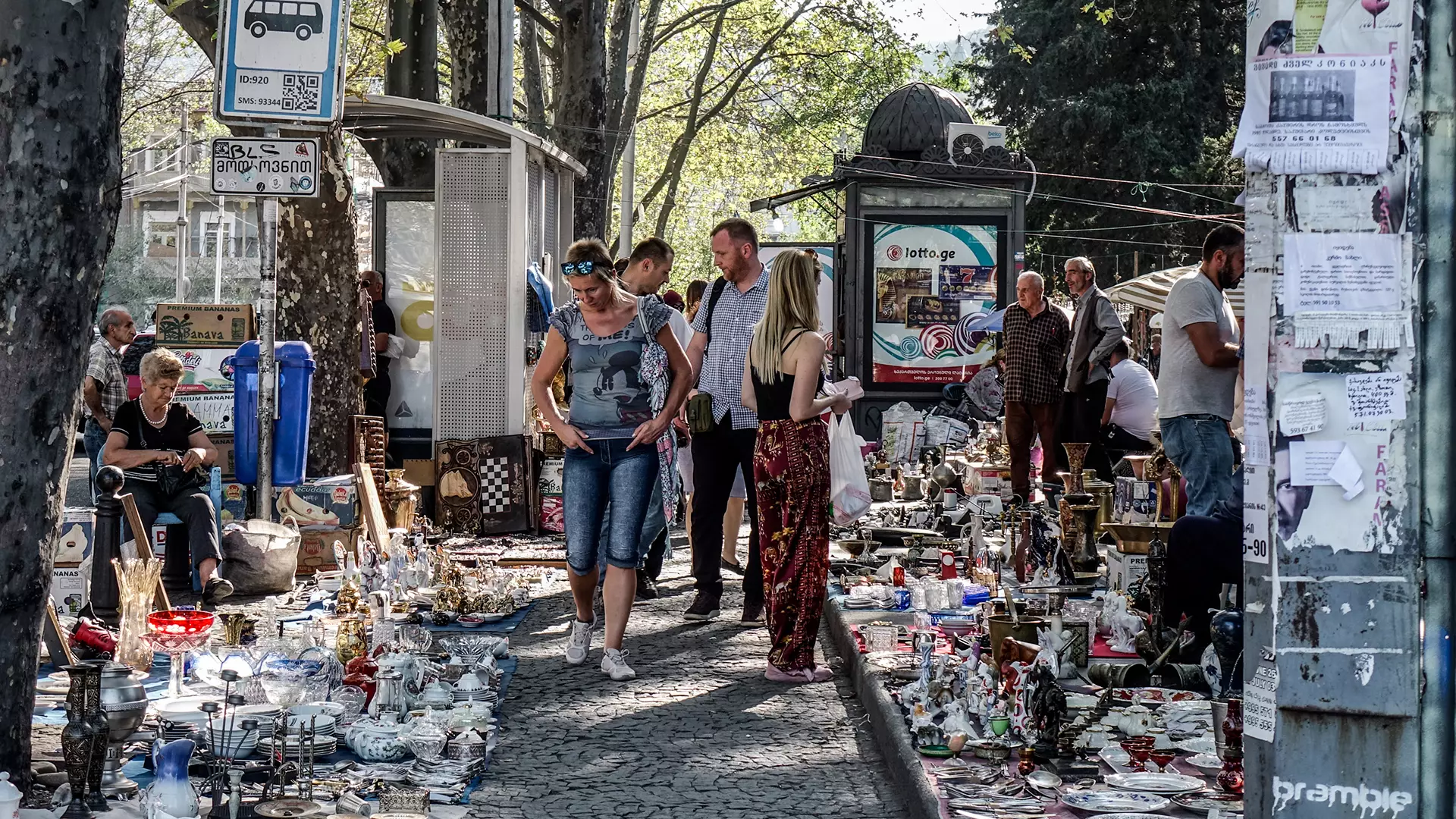Where to Purchase Georgian Souvenirs in Tbilisi
The coexistence of multiple cultures is brought to life in everyday items. Souvenirs, which briefly tell the story and clarify the living style of the city serves, as a wonderful example of this melting pot.
The following information is to inform guests about Georgian souvenirs and where to purchase them.
Traditional Georgian tablecloth - Supra
The traditional blue tablecloth belongs to the monuments of the intangible cultural heritage of Georgia. The tablecloth is specifically designed with ornaments such as plants, celestial bodies, dishes, or human figures. Blue Supra was common in eastern Georgia. Purchase a traditional tablecloth from one of the small producers having a stall in the large malls or tourist districts.
Caucasian carpets
Caucasian people have been knitting carpets and rugs for many centuries which was highly supported by the vast sheep-breeding pastures. The colorful plants blossoming in the fields were utilized for dying the threads.
Every ornament in each Caucasian carpet has a meaning and tells us the story of ancient histories and traditions. The carpets add coziness to a modern interior and interest in them has only increased in the XXI century. You can find them at many shops in the oldest districts of Tbilisi.
Jewelry of Georgian enamel (minankari)
People have been working with enamel coating for 13 centuries. It is applied to religious items and secular jewelry. Georgian enamel is often colored in beautiful wine color, as well as blue and green, and the material can be gold, silver or copper. In general, the technique of cloisonne enamel, have been known in Georgia since the 1st century CE.
Handicrafts

Dishes, accessories, bags, jewelry, and decorations are only a small part of the handmade items available for purchase. Find them at open markets, souvenir shops, or antique shops.
Georgian traditional cloth
If anything expresses the esthetics and character of Georgian people, it is Georgian dress. Georgian clothes and ornaments have ever been created using diverse fabrics including silk, wool, linen, and cotton. Pearls and sometimes even gold were used for decoration. Residents of every single region tried to tailor their clothes to their climates and their way of life. Currently, traditional clothing is principally used in national dances and festivals.
Georgian Khanjali (Dagger)
Khanjali, the same as the dagger, was introduced due to permanent warfare. The history of the Georgian dagger begins in ancient times, proven by countless archeological discoveries. It is a weapon, composed of a handle, blade, and sheath, made of bone, steel, and leather. The Khanjali was produced throughout Georgia and the masters carved various ornaments on it. Tbilisi was one of the central cities in previous centuries where blacksmiths created the weapon to distribute throughout the Caucasus and to the neighboring countries.
Antique furniture in Tbilisi
Several antique shops throughout the city sell furniture, dishes, accessories, chandelier, musical instruments, coins, monuments, and sometimes even street signs.
Dry Bridge Market — the best souvenirs in Tbilisi

An antique market operates on so-called Dry bridge between Dedaena Park and the 9th of April Garden in the center of Tbilisi.
The market is active on the Dry bridge between 12:00-17:00 every season of the year, including working days, excluding state holidays.
This place is subdivided into a couple of sections including vintage clothes, works of art, miscellaneous antique thing, and books. Except for the traditional souvenirs, you will find countless items from the Soviet period.
Souvenirs shop and markets in Tbilisi
You can buy souvenirs and gifts at the museums, galleries, local shops, and subways in Tbilisi, and mostly in the Meidani, Abanotubani, Sololaki, and Mtatsminda districts.
Cookie Policy
